Abstract
1. The reflex responses to chemical and mechanical irritation of the laryngeal mucosa have been studied by applying stimuli to the open larynx of tracheostomized cats while monitoring ventilatory and circulatory variables. The responses were studied before and after vagotomy and before and after denervation of the larynx by transection of the superior and recurrent laryngeal nerves.
2. The immediate response to laryngeal irritation was not consistent. The most frequent responses were coughing, and slowing and deepening of breathing without coughing. Less common were expiratory apnoea and sustained, simultaneous inspiratory and expiratory activity.
3. A consistent late change in the pattern of breathing occurred. Slower, deeper breathing with increased total lung resistance (bronchoconstriction) was seen after the immediate response abated.
4. The slowing of breathing was due to prolongation of both the time for inspiration and the time for expiration. The rate of increase in phrenic nerve activity was also slowed.
5. Vagotomy did not alter qualitatively the reflex changes in the pattern of breathing, although bronchoconstriction no longer occurred.
6. The responses were abolished by denervation of the larynx.
Full text
PDF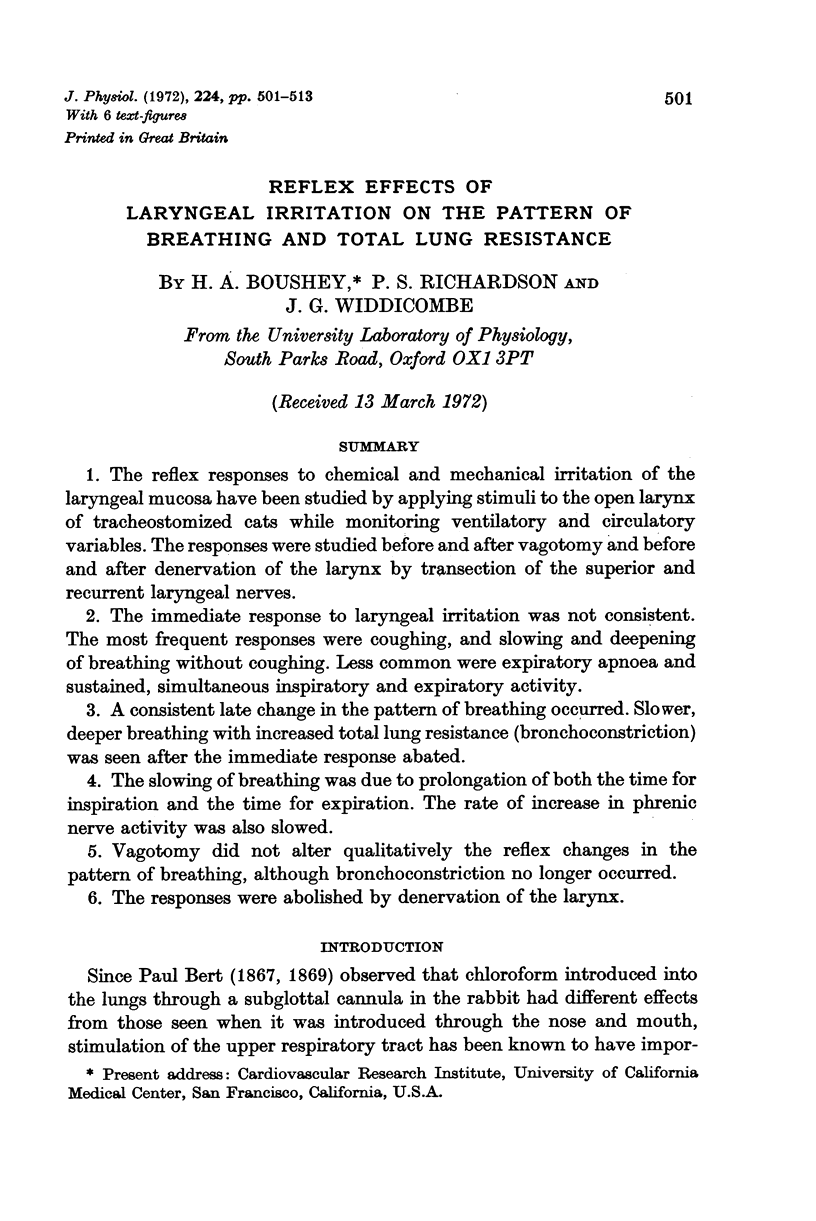
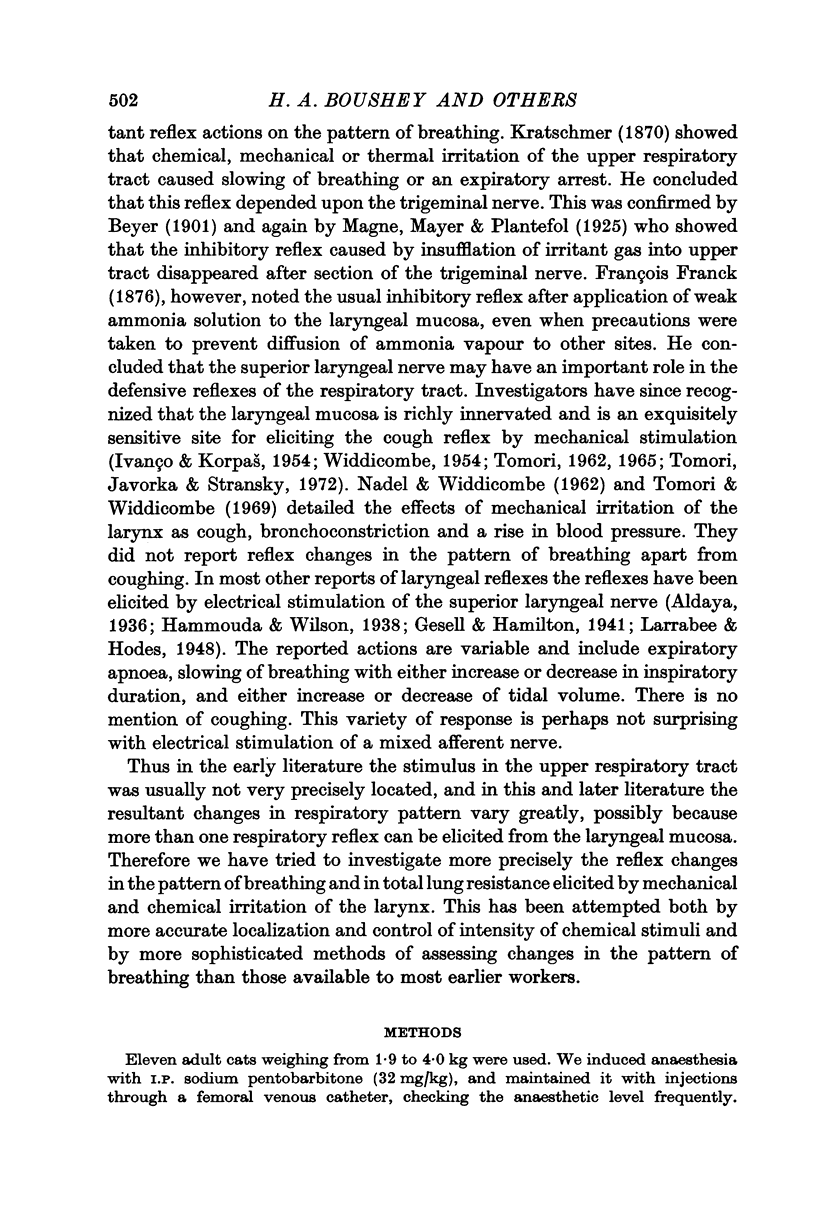
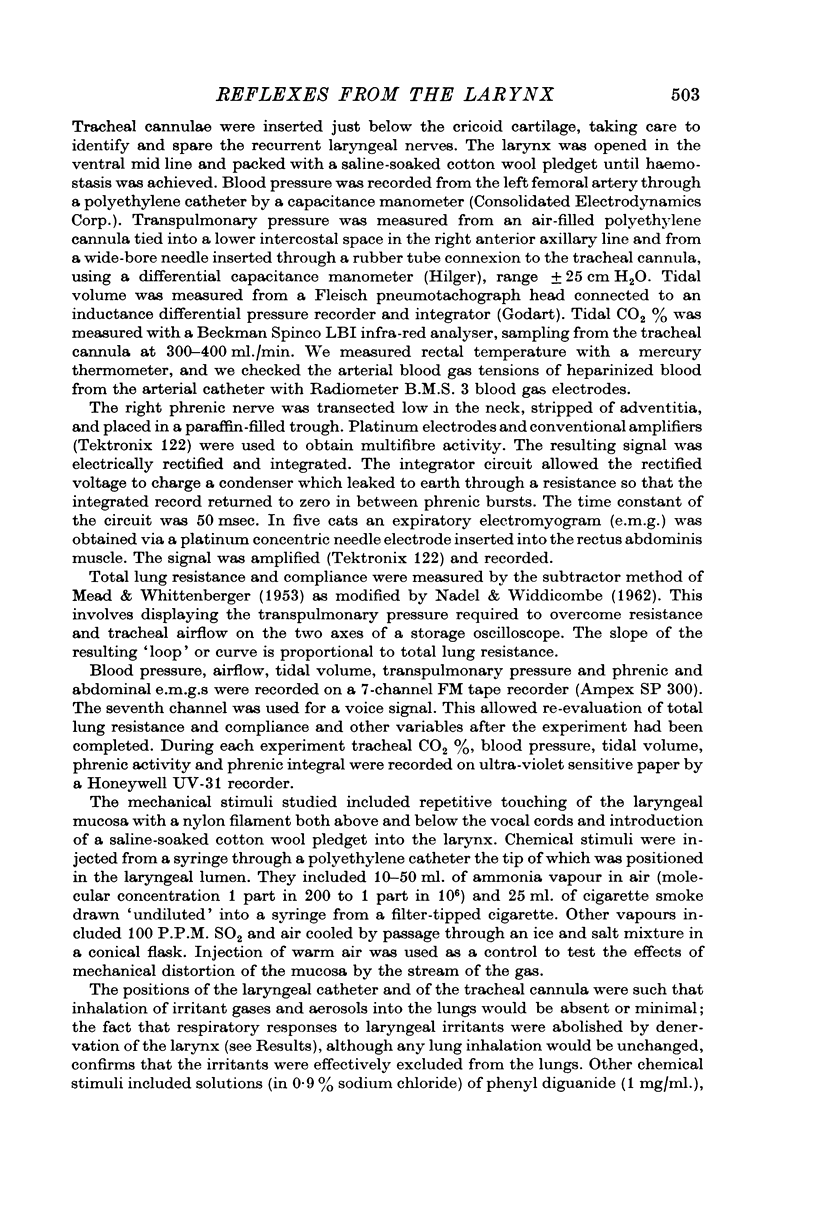
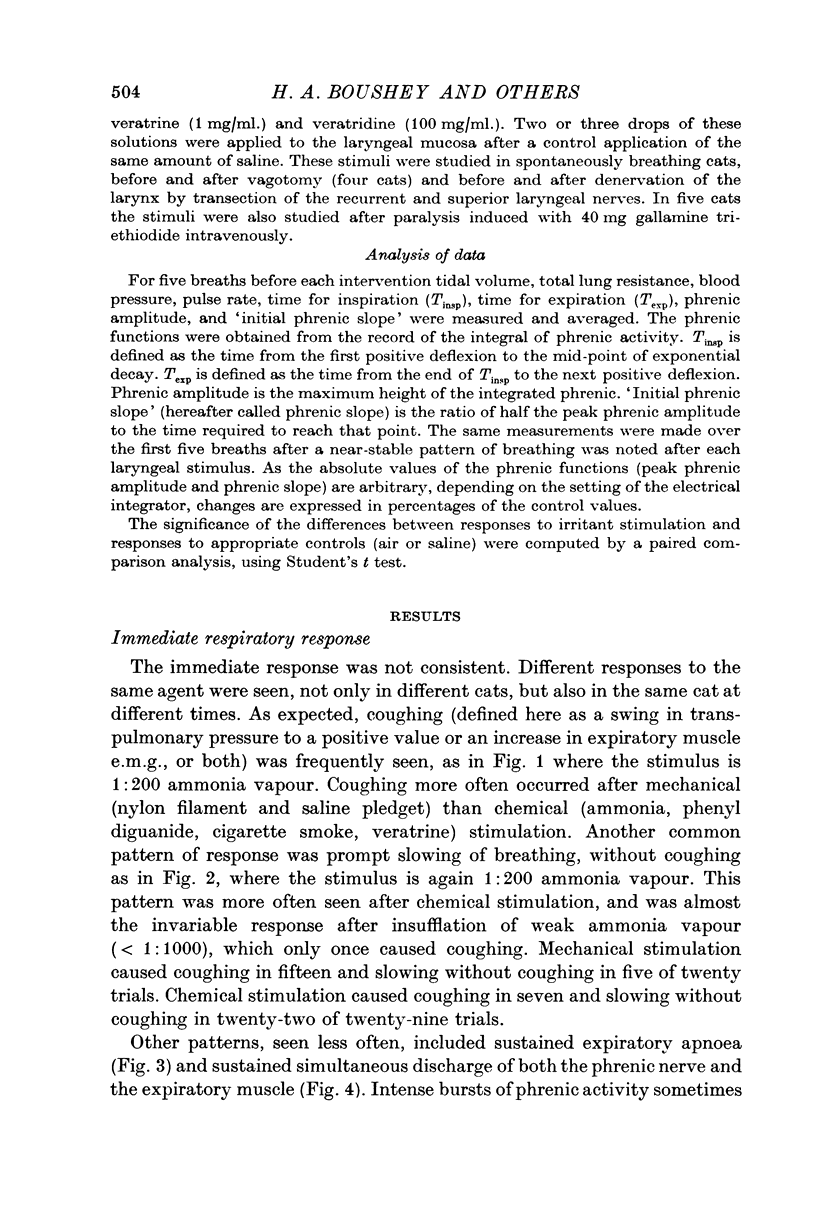
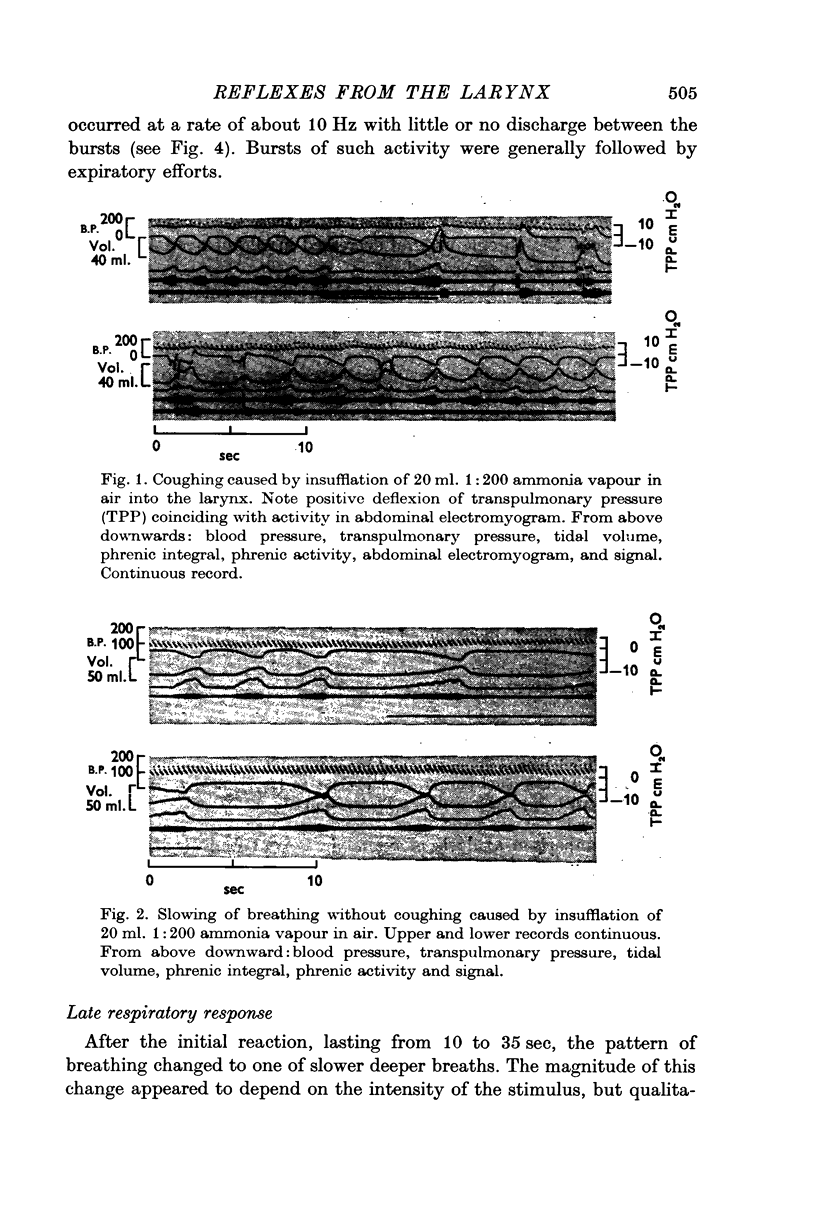
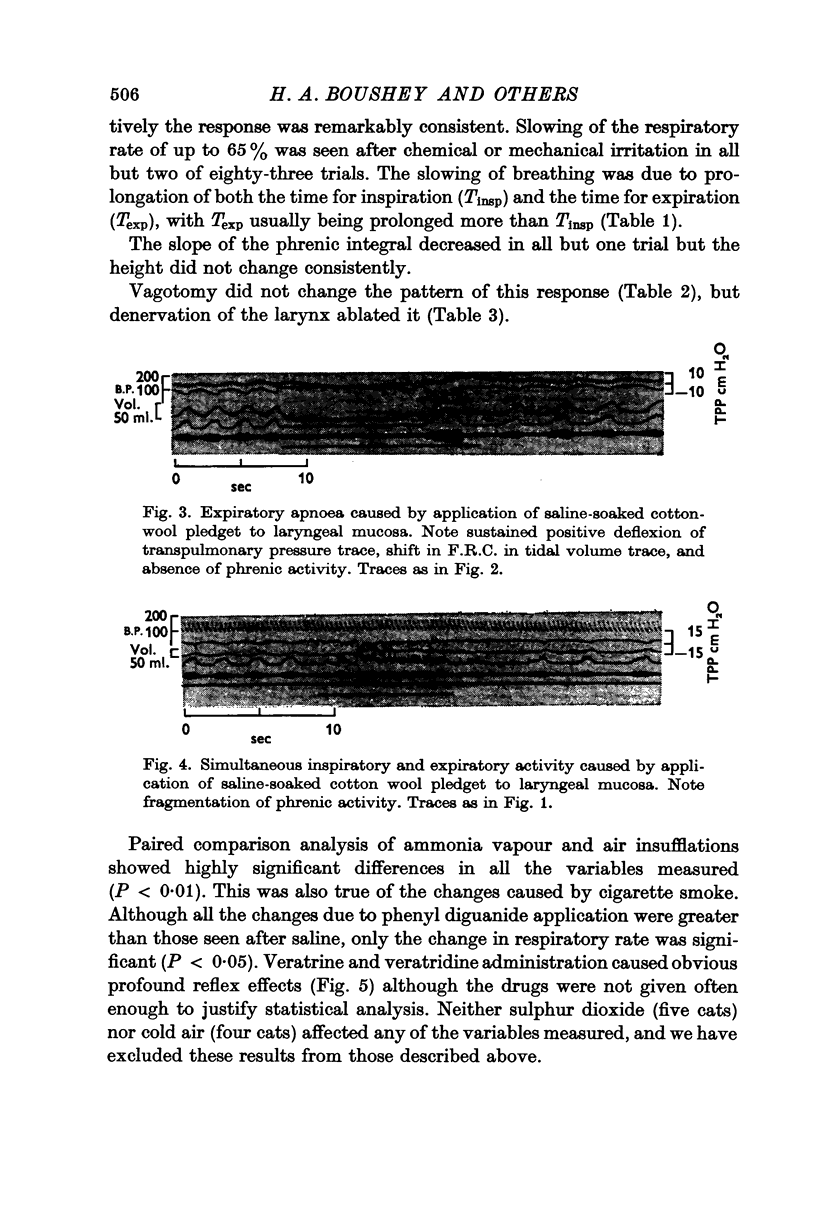
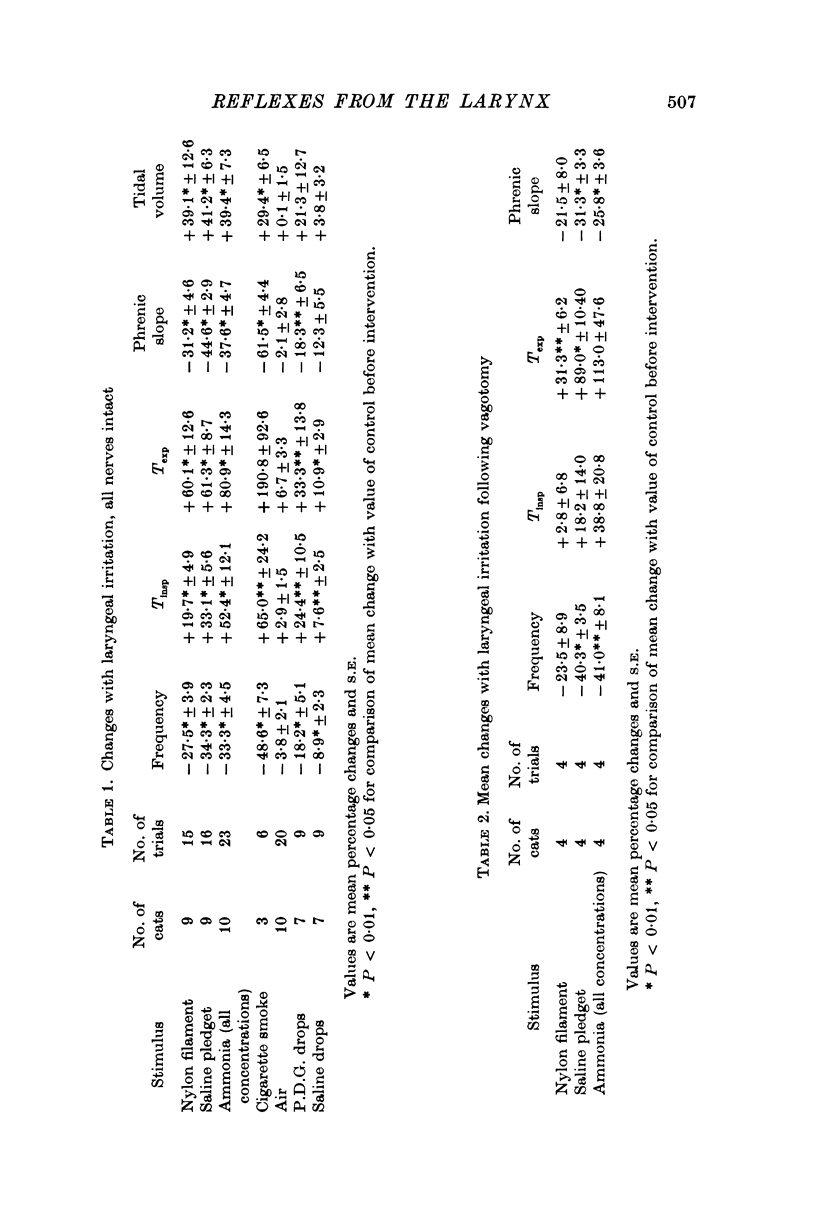
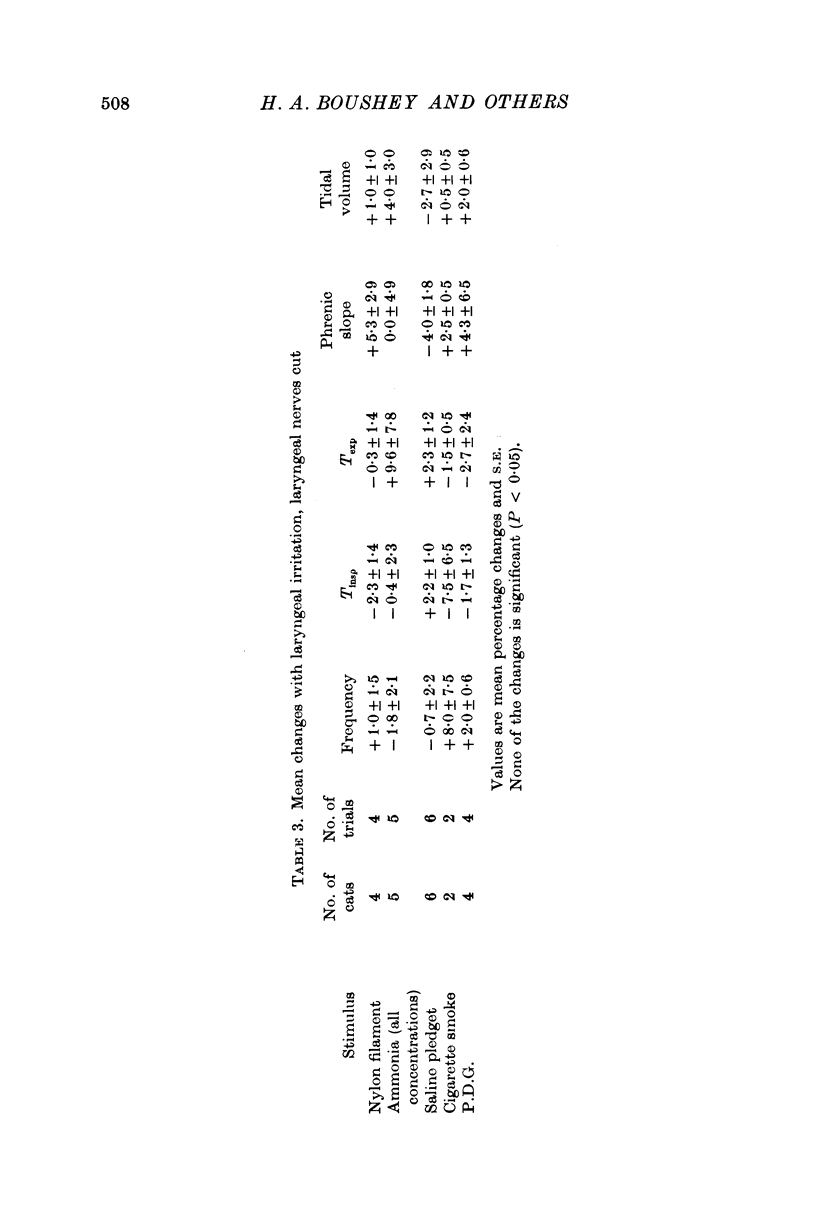
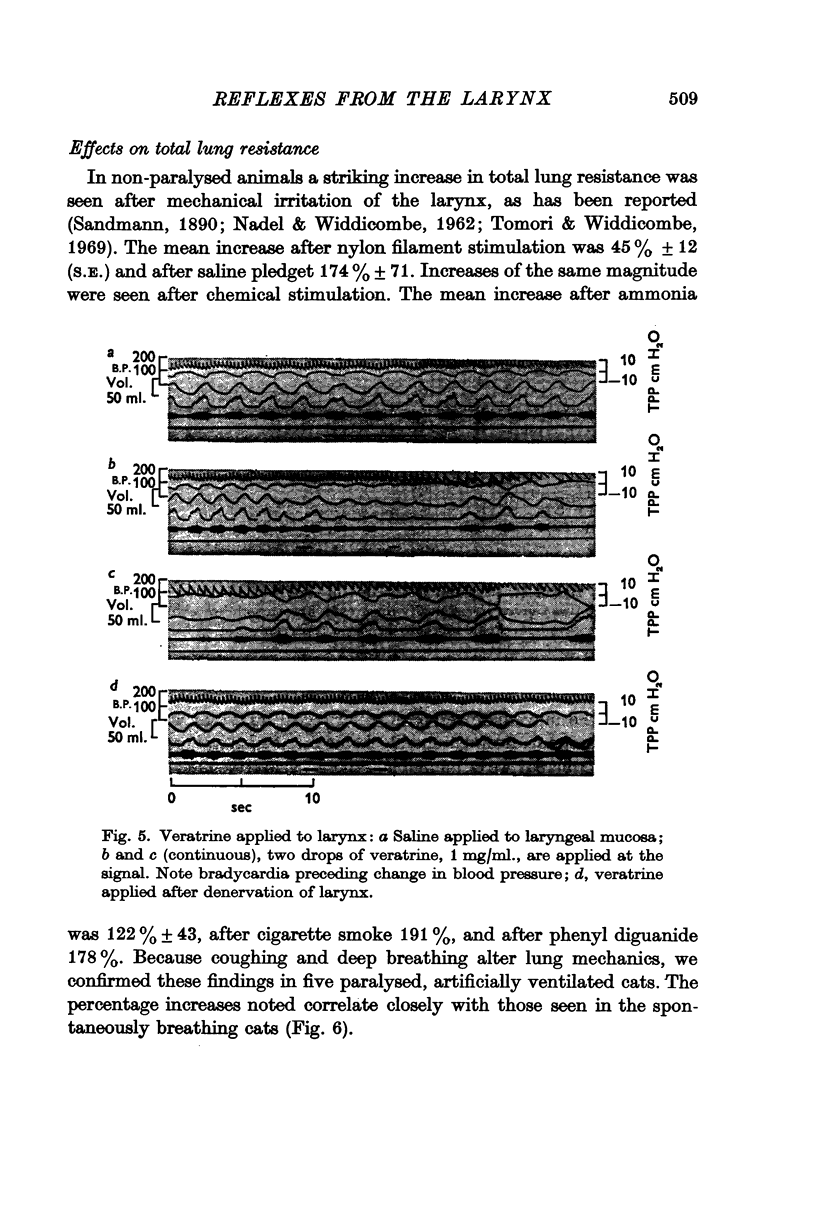
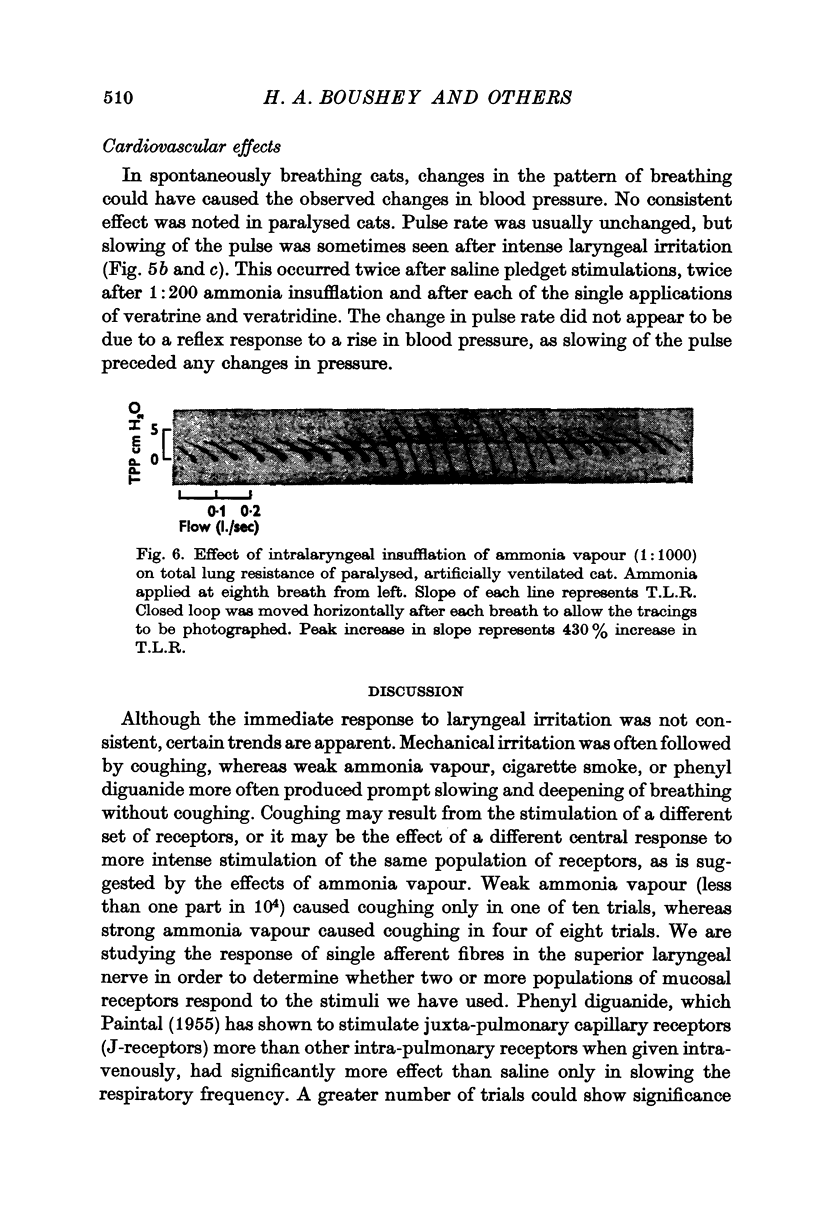
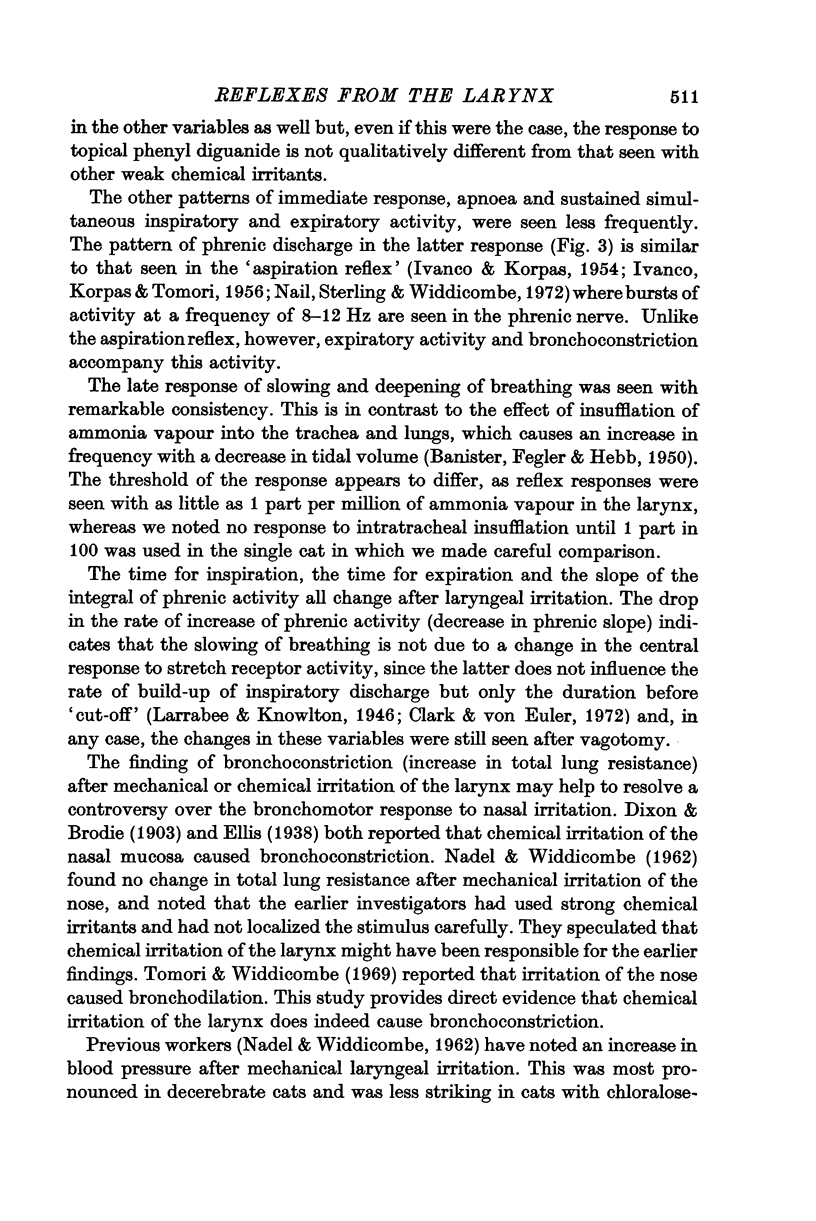
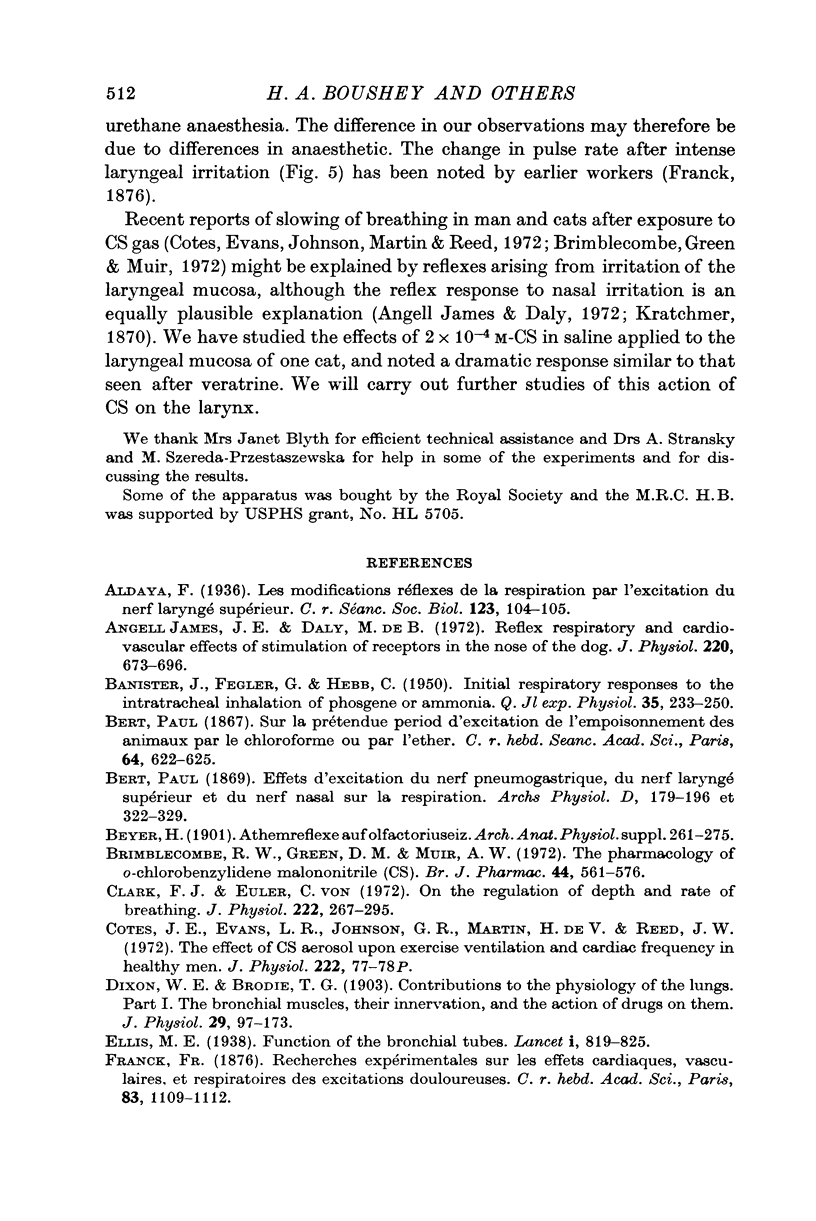
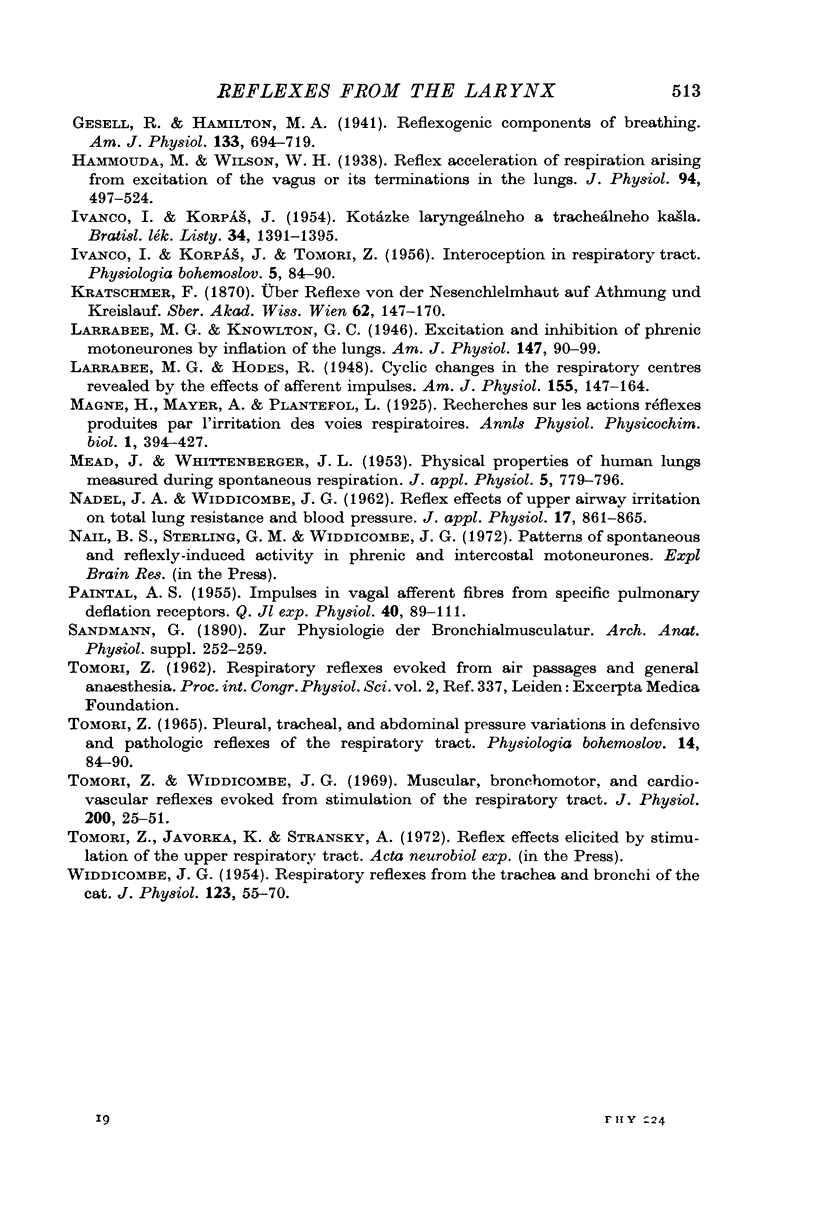
Images in this article
Selected References
These references are in PubMed. This may not be the complete list of references from this article.
- BANISTER J., FEGLER G., HEBB C. Initial respiratory responses to the intratracheal inhalation of phosgene or ammonia. Q J Exp Physiol Cogn Med Sci. 1949 Nov;35(3):233-50, 7 pl. doi: 10.1113/expphysiol.1949.sp000952. [DOI] [PubMed] [Google Scholar]
- Brimblecombe R. W., Green D. M., Muir A. W. Pharmacology of 0-chlorobenzylidene malononitrile (CS). Br J Pharmacol. 1972 Mar;44(3):561–576. doi: 10.1111/j.1476-5381.1972.tb07293.x. [DOI] [PMC free article] [PubMed] [Google Scholar]
- Clark F. J., von Euler C. On the regulation of depth and rate of breathing. J Physiol. 1972 Apr;222(2):267–295. doi: 10.1113/jphysiol.1972.sp009797. [DOI] [PMC free article] [PubMed] [Google Scholar]
- Cotes J. E., Evans L. R., Johnson G. R., Martin H. de V., Reed J. W. The effect of CS aerosol upon exercise ventilation and cardiac frequency in healthy men. J Physiol. 1972 Apr;222(1):77P–78P. [PubMed] [Google Scholar]
- Dixon W. E. Contributions to the physiology of the lungs: Part I. The bronchial muscles, their innervation, and the action of drugs upon them. J Physiol. 1903 Mar 16;29(2):97–173. doi: 10.1113/jphysiol.1903.sp000947. [DOI] [PMC free article] [PubMed] [Google Scholar]
- Hammouda M., Wilson W. H. Reflex acceleration of respiration arising from excitation of the vagus or its terminations in the lungs. J Physiol. 1939 Jan 14;94(4):497–524. doi: 10.1113/jphysiol.1939.sp003696. [DOI] [PMC free article] [PubMed] [Google Scholar]
- IVANCO I., KORPAS J. K otázke laryngeálneho a tracheálneho ka6sl'a. Bratisl Lek Listy. 1954 Dec;34(12):1391–1396. [PubMed] [Google Scholar]
- IVANCO I., KORPAS J., TOMORI Z. Ein Beitrag zur Interozeption der Luftwege. Physiol Bohemoslov. 1956;5(1):84–90. [PubMed] [Google Scholar]
- James J. E., De Burgh Daly M. Reflex respiratory and cardiovascular effects of stimulation of receptors in the nose of the dog. J Physiol. 1972 Feb;220(3):673–696. doi: 10.1113/jphysiol.1972.sp009729. [DOI] [PMC free article] [PubMed] [Google Scholar]
- NADEL J. A., WIDDICOMBE J. G. Reflex effects of upper airway irritation on total lung resistance and blood pressure. J Appl Physiol. 1962 Nov;17:861–865. doi: 10.1152/jappl.1962.17.6.861. [DOI] [PubMed] [Google Scholar]
- PAINTAL B. A. Impulses in vagal afferent fibres from specific pulmonary deflation receptors: the response of these receptors to phenyl diguanide, potato starch, 5-hydroxytryptamine and nicotine, and their rôle in respiratory and cardiovascular reflexes. Q J Exp Physiol Cogn Med Sci. 1955 Apr;40(2):89–111. doi: 10.1113/expphysiol.1955.sp001116. [DOI] [PubMed] [Google Scholar]
- TOMORI Z. PLEURAL, TRACHEAL AND ABDOMINAL PRESSURE VARIATIONS IN DEFENSIVE AND PATHOLOGIC REFLEXES OF THE RESPIRATORY TRACT. Physiol Bohemoslov. 1965;14:84–95. [PubMed] [Google Scholar]
- Tomori Z., Widdicombe J. G. Muscular, bronchomotor and cardiovascular reflexes elicited by mechanical stimulation of the respiratory tract. J Physiol. 1969 Jan;200(1):25–49. doi: 10.1113/jphysiol.1969.sp008680. [DOI] [PMC free article] [PubMed] [Google Scholar]
- WIDDICOMBE J. G. Respiratory reflexes from the trachea and bronchi of the cat. J Physiol. 1954 Jan;123(1):55–70. doi: 10.1113/jphysiol.1954.sp005033. [DOI] [PMC free article] [PubMed] [Google Scholar]








